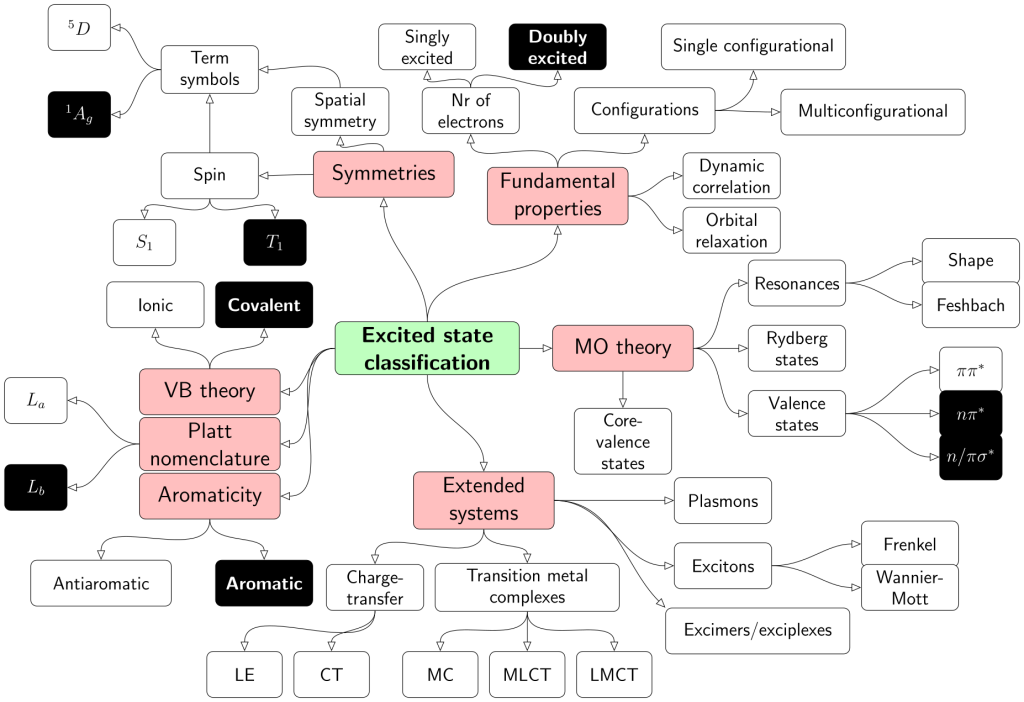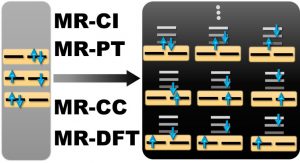A new book chapter by Patrick and Felix just appeared online: “Classification and Analysis of Molecular Excited States“. Ultimately, this chapter will be part of the Comprehensive Computational Chemistry series published by Elsevier.
In this chapter we explore the various ways in which excited states are classified, that is, according to
- the molecular orbitals involved,
- valence bond resonance structures,
- spatial and spin symmetry,
- more fundamental wavefunction properties (double excitations, correlation, etc),
- excited-state aromaticity, and
- delocalisation and charge transfer.
The map below shows the different classes and highlights the multitude of ways that are used to discuss excited states in the literature.

It is the purpose of this chapter to discuss all these types of states, covering the mathematical and physical background as well as the consequences to spectroscopy and photochemistry.
